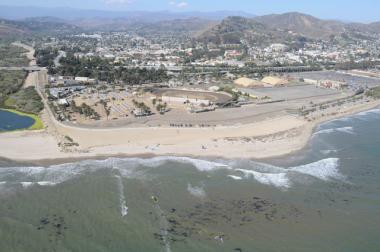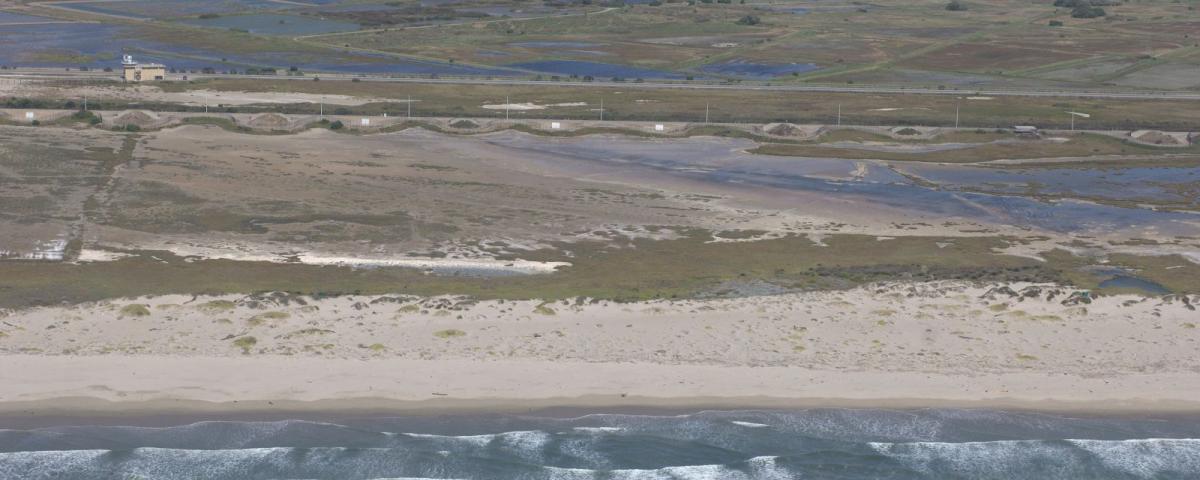Ormond Beach, CA
Ormond Beach (pictured above) is the site of an exciting coastal retreat project. Ecosystem managers are allowing space for coastal ecosystems to migrate inland as sea level rises. Since wetlands and dunes naturally buffer sea level rise and storm surge, this strategy will help conserve their benefits over time.
Two miles long and extending from Point Hueneme to Point Mugu Naval Air Station, Ormond Beach is a 1,500-acre area composed of agriculture, industry, and wetlands. Over the last century the wetlands have been drained, filled, and degraded. Still, the area remains one of the few sites in Southern California with an intact dune-transition zone-marsh system. Even in its degraded condition, Ormond Beach provides habitat for numerous migratory bird species and nesting sites for threatened snowy plover and endangered least terns.
In one of the most ambitious wetland restoration projects in California’s history, the Coastal Conservancy set a goal to acquire 900 acres of property at Ormond Beach and restore the natural tidal action and freshwater inputs from inland sources. As of 2013, the Coastal Conservancy and Nature Conservancy were in the process of acquiring this land and funding a restoration feasibility study. The ultimate aim of the project is to restore the area to a fully-functioning, self-sustaining wetland ecosystem. By acquiring and restoring this large area, the sandy beach and wetland ecosystems will have space to naturally migrate as sea levels rise, increasing the coastline’s resiliency to the threats of climate change.
To read more about the Ormond Beach restoration project, visit:
- California Coastal Conservancy’s website on the Ormond Beach Restoration Project
- The Nature Conservancy’s LA-Ventura Project
- Aspen Environmental Group’s Ormond Beach Restoration Feasibility Study
Surfers’ Point, Ventura, CA

Surfers’ Point in Ventura, CA is a prime example of managed retreat from sea level rise. The popular surfing spot is bordered by a California State Park bike path and the Ventura County Fairground parking lot.
In the 1990s storm erosion repeatedly damaged both the bike path and the parking lot. This lead to a controversial attempt to protect the shoreline with a stone revetment, a type of hard armoring. The revetment exacerbated downshore erosion—a common effect of hard armoring—and the bike path and parking lot continued to erode.
After a negotiation process that took about 10 years, a 2001 working group crafted a managed retreat strategy that currently is being implemented. The plan includes:
- Relocation of the bike path inland
- Removal of the existing revetment
- Restoration of the natural beach and dune habitat
- Removal of part of the parking lot to increase the beach width by 60 feet
- A 5-year plan for opportunistic sand replenishment
- Advocacy for the removal of the Matilija Dam, which would increase sediment supply to the beach via the Ventura River.
To read more about the managed retreat project at Surfer’s Point, visit:


